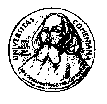Overview
EuroMath2 WYSIWYG XML Editor Platform serves as a platform for editors editing various XML files.
It is able to contain and manage editors with WYSIWYG capability. By default it contains:
- a basic XSL-FO editor, capable of editing XML documents transformable to XSL-FO,
- a read-only support for SVG and MathML,
- a (very incomplete) XHTML support (implemented using a stylesheet capable of transforming
XHTML into the XSL-FO)
The power of EuroMath2 lies in its extendability by plugins. EuroMath2 offers well-defined
XML processing engine extendable by custom plugins and/or XSLT stylesheets. Custom editors
may use the default editor, that offers wizards for complex document modification
operations.
EuroMath comes in two favours: a standalone application, and an Eclipse plugin. For more information
how to download and run EuroMath please see the download section. Main features:
- Open-source, free software released under the MPL1.1 license
- Fully customizable transformers executing XSLT scripts or Eclipse Java plugins.
- XML element/attribute autocompletion driven by custom DTD, XML Schema, Relax, RelaxNG, Trex
- Entity support
- Fully supports documents with multiple namespaces
Why new XML editor when there are a dozens of them?
In short, because they all are XML editors, not
document XML editors.
Let's suppose that you want to develop your own XML text format. To accomplish that, you select your
own namespace, develop your own schema and some kind of stylesheet. Let the stylesheet be instance of XSLT,
converting your XML document to the XSL-FO format. Everything is working fine. Now you want to support
images. You may define a special element (like
img) that gets replaced by the actual image.
However you want to support SVG images aswell, MathML formulae etc. Basically, you want to support
anything that can be transformed to a bitmap (or vector) image. Now
- you don't care what the image source is (it may be MathML, SVG or any XML language),
but you want it to be valid. There is simply no way to attach (or reference) infinite number
of schema (one for each 'image' language).
- no XSLT is able to transform MathML to an image (not even into SVG document)
More formally,
no standard is defined for a complex processing of document with multiple namespaces.
This is where EuroMath2 comes into play. Basically, EuroMath2 is able to split the document into
fragments with distinctive namespaces, process them separately and then put them together into one
result of some kind.
Screenshots
Some screenshots of an Euromath2 RCP application:
Support for documents with multiple namespaces

Schema-driven modifications

 EuroMath2 XML Editor Project
EuroMath2 XML Editor Project
 Schema-driven modifications
Schema-driven modifications
